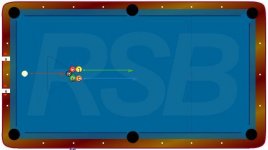O
onepocketchump
Guest
I have a question. Is the Pro Cup ball by Aramith larger than normal pool balls. I have compared several with other Aramith balls and I think it is a 16th or a 32cnd of an inch larger. Besides that is just looks bigger.
I find this ball harder to play with. Anyone else hve these observations?
John
I find this ball harder to play with. Anyone else hve these observations?
John
